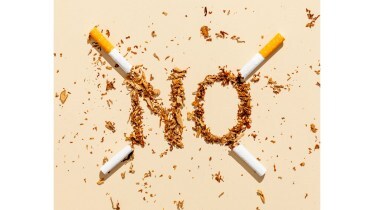By Nirupama Soundararajan
Absolute bans as a policy have rarely worked, even if the motive and accompanying rhetoric have arguably been in the best interest of morally acceptable human behaviour or for the environment. Outright bans have usually been knee-jerk reactions and often an easy recourse that policymakers have resorted to, failing to consider if their viability and objectives have been met. More often than not, consumption of banned items is seen to go up with a vengeance that is counter-productive. Instead, policymakers should be encouraging innovations and focussing on behavioural change.
Numerous examples of ineffective and unenforceable bans litter history including those for single-use plastics and alcohol among others. Many have had to be partially or fully rolled back with permissions granted later to include alternatives. In the case of alcohol, consumer education urging responsible drinking, availability of quality- alcohol, and prolific and constant communication on the deleterious effects of unbridled consumption, coupled with access to information on rehab programmes, and focussing on removing any taboos associated with seeking help, have yielded better results in augmenting consumption patterns and behaviour.
In the past, a few Indian states like Haryana, Andhra Pradesh, and Kerala had attempted to ban liquor, only to repeal the decision almost immediately. Imposing prohibition on liquor in many Indian states has not been successful and was rolled back. The consumption of alcohol in dry states such as Bihar and Gujarat is not absent but camouflaged.
Bans drive consumption underground; however, regulations encourage accountability and offer consumers the opportunity for better and faster legal recourse. Most importantly, bans discourage and disincentivize science-driven innovation, blowing away the chance for the public to experience better and safer alternatives.
Another classic example of a failed ban is the ‘Prohibition of Electronic Cigarettes Act, of 2019’ which banned a broad category of Electronic Nicotine Delivery Systems (ENDS) including electronic cigarettes, vaping devices, and Heat Not Burn (HNB) products. Such bans are difficult to implement and leakages abound. In spite of the ban, many of these devices can still be purchased online and at the neighbourhood paan shops. Dark businesses possibly selling counterfeit, dangerous, unregulated products, signal the continued use of these banned devices.
The debate over the ban on tobacco products has been raging for decades. Those for their ban argue that tobacco products are harmful to health, cause environmental damage, and impose a social cost on non-smokers. While the contrarian opinion of those consuming tobacco and its variants is based on their right to free informed choice and that banning such products infringes on the rights of individuals and their freedom to choose. Their view is that the government should not interfere with their personal preferences.
Given such extenuating circumstances, what is likely to work though is the legitimate availability and access to a wider range of scientifically improved and less harmful products. Allowing for such alternatives over traditional high-tar, high-nicotine products, as healthier options and as a desirable bridge to kicking the habit, may help. This is the path adopted by many other countries. Recognising the positive role of some of these devices in significantly reducing the problem, many countries in Europe, the US, and Japan have permitted their use.
Moreover, banning alternative products, while the sale of traditional tobacco products thrives is far from prudent. Consumers must always be given the right to choose for themselves. If made available, The more benign alternatives may strike a chord and provide the appropriate option to help them shift to less aggressive forms of tobacco consumption.
Meanwhile, in India, by banning E-Nicotine Delivery Options like HTPs (Heated Tobacco Products), E-cigarettes, vaping devices, etc, without gathering and reviewing available research data, the government has created an environment that will arguably put public health at greater risk, as it wipes out significantly less harmful options for smokers. Further, the government has discouraged innovation by banning E-Nicotine Delivery products. The question to be asked is – has the ban stopped the availability and sale of alternative prohibited products? Or has it resulted in immediately reducing tobacco consumption? The answer to both is a resounding no.
Retaining products that could demonstrably reduce harm would have been sensible, with greater public health benefits. It would be better for India to lead the fight against tobacco through effective regulation rather than prohibition. Policymakers should hold constructive multi-stakeholder consultations with the medical community, consumers, industry, policy experts, scientific organizsations, clinicians, global researchers, etc. to frame a balanced policy framework that will allow technologically advanced products to aid the smoker’s fight to quit habits and enable a smoke-free society.
Policymakers must acknowledge that bans do not work, especially for those sectors that have been traditionally considered “sin sector.” However, accommodating better products driven by scientific innovation might just be the answer to what the regulators are looking for!
(Nirupama Soundararajan is the Partner at Policy Consensus Centre. Views are personal)
